Article by Vladimir London
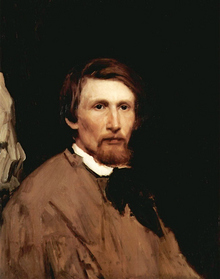 Best known as a painter of historical and mythological scenes, Viktor Vasnetsov was born 15 May 1848 in Lopiyal, in Viatka Province. Originally intending to follow his father and grandfather into the priesthood, Vasnetsov attended seminary at age ten. While studying in Ryabovo, he helped a local icon painter with his trade and aided exiled Polish artist Andriolli to make frescoes for the Aleksandr Nevsky Cathedral. Upon graduating, however, he decided to pursue his own course. He auctioned two of his own paintings to fund a move to St. Petersburg, where in 1867 he began to attend the Imperial Academy of the Arts.
Best known as a painter of historical and mythological scenes, Viktor Vasnetsov was born 15 May 1848 in Lopiyal, in Viatka Province. Originally intending to follow his father and grandfather into the priesthood, Vasnetsov attended seminary at age ten. While studying in Ryabovo, he helped a local icon painter with his trade and aided exiled Polish artist Andriolli to make frescoes for the Aleksandr Nevsky Cathedral. Upon graduating, however, he decided to pursue his own course. He auctioned two of his own paintings to fund a move to St. Petersburg, where in 1867 he began to attend the Imperial Academy of the Arts.
In 1870, Vasnetsov befriended Ivan Kramskoy and became a part of his association of Realist artists, the Peredvizhniki (“the Itinerants”). Despite Vasnetsov’s later fame for historical and mythological scenes, his works of the 1870s celebrated the common business of life.
In 1876, at the recommendation of his friend and fellow “Itinerant,” Ilya Repin, Vasnetsov moved to Paris. There, he discovered his passion for painting the Russian mythology and folklore with which he had grown up, inaugurating a completely new style of Russian painting.
His first subject was Ivan Tsarevich Riding a Gray Wolf, a scene from a traditional Russian fairy tale and painted in a suitably epic and fantastic fashion which he would not finish for over a decade.
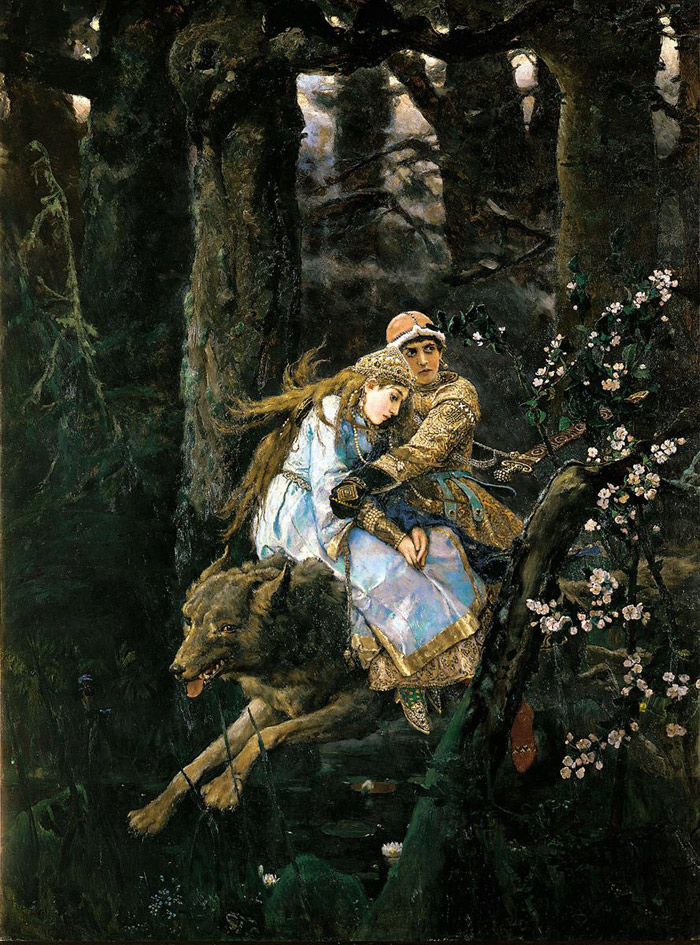
He did not entirely abandon his contemporary works, however; among several well-received genre Realist genre scenes, he also produced the large painting Fairground Booths in Paris during 1876 and 1877.
In 1877, he returned to Moscow, riding high the tide of interest in Russian history and culture. Unfortunately, Vasnetsov’s works of this period were dismissed by contemporary art critics. He did not achieve popularity until the 1880s, when his religious art achieved notoriety. Of particular importance was his offer to paint frescoes in Kiev’s St. Vladimir’s Cathedral. Although challenging, the job let Vasnetsov create a grand tableaux, like the Old Masters.
Vasnetsov worked on the cathedral for over ten years, creating over 400 studies and sketches during that time. In the end, he produced over 2000 square feet of frescoes detailing famous figures from Russia’s long history. The final product was somewhat controversial. Vladimir Stasov, a notable art critic, called it “sacrilegious,” while Dmitry Filosov deemed it a “bridge” between the different Russian social classes.
It was during his time in Kiev that Vasnetsov began work on his most famous work, The Bogatyrs.
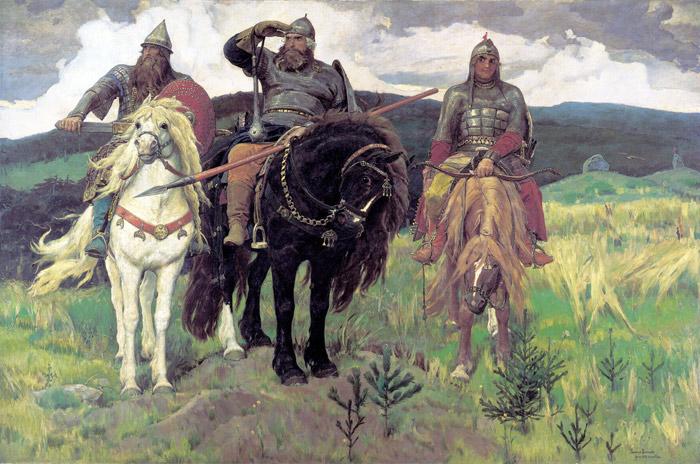
Depicting Dobrynya Nikitich, Ilya Muromets and Alyosha Popovich, three of the most famous bogatyrs (literary knights-errant, similar to King Arthur and his knights in Western Europe), the painting skilfully blends Vasnetsov’s Realist abilities with the heroic fantasy of the myth. The hazy, whimsical landscape contrasts with the concrete men and their steeds to create a mood that perfectly fit the sensibilities of 19th century Russian audiences.
Vasnetsov’s talents extended to more than just painting. He helped on stage and costume design for a number of Nikolay Rimsky-Korsakov’s operas, including 1885’s The Snow Maiden and 1897’s Sadko. In the 20th century, he was even commissioned by the Soviet government to design new uniforms, creating a new style of cap called the bogatyrka, after the conical helms worn by the eponymous knights. He became particularly well-known later in life for applying his predilection for fantasy and fairy tales to building design, contributing to the general architectural movement known as Russian Revivalist. Vasnetsov designed a church, his own estate (which was turned into a museum dedicated to his art in 1953), and the façade of the Tretyakov Gallery in Moscow.
Vasnetsov was also involved in the arts behind the scenes. He was curator of the Tretyakov Gallery, ensuring after the Russian Revolution that religious paintings, particularly those by Aleksandr Ivanov, found their way from churches to the safety of the gallery. He personally provided for a great number of the works found in the State Historical Museum.
Vasnetsov was an artistic polymath, adept at landscape, portraiture, illustration, and architecture. He helped create a tone that would shape the 19th and 20th centuries, as well as leaving a rich legacy of uniquely Russian art. He died 23 July 1926, an enduring treasure for Russia and the world of art.
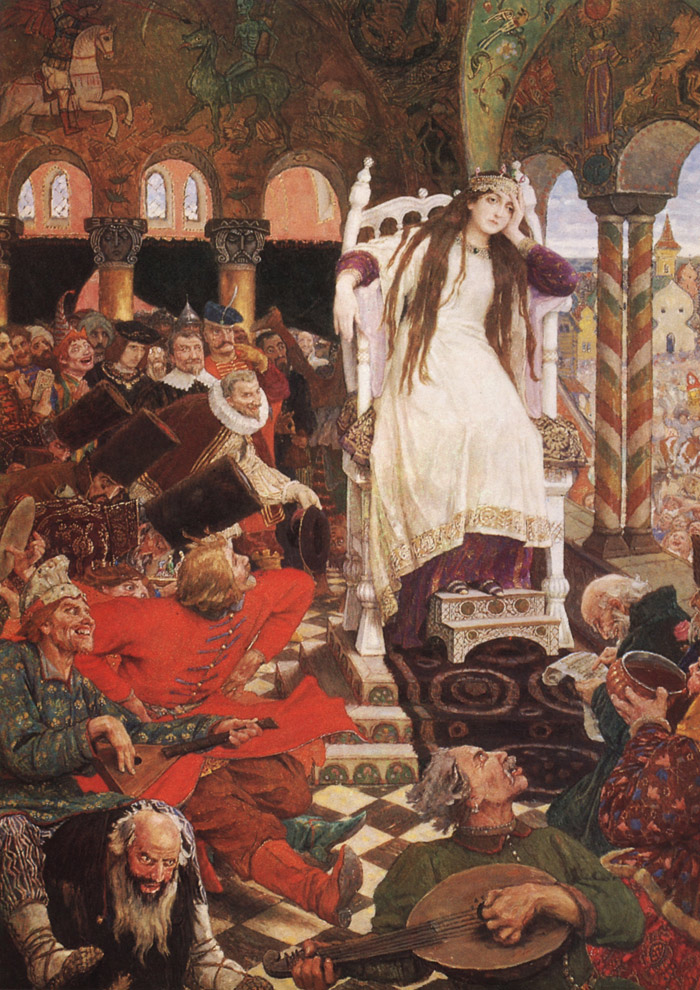
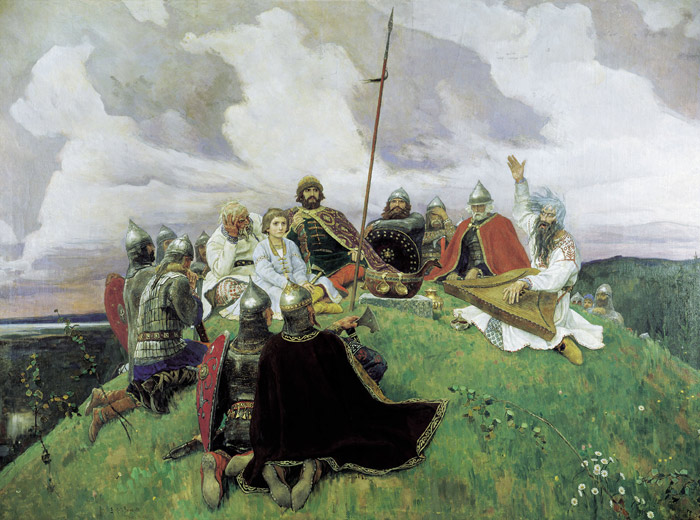
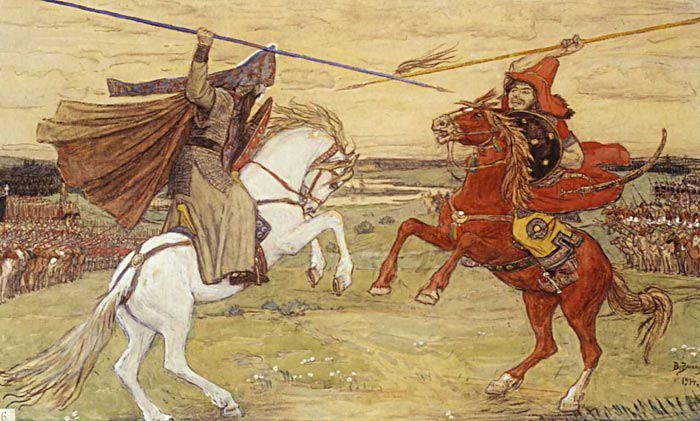
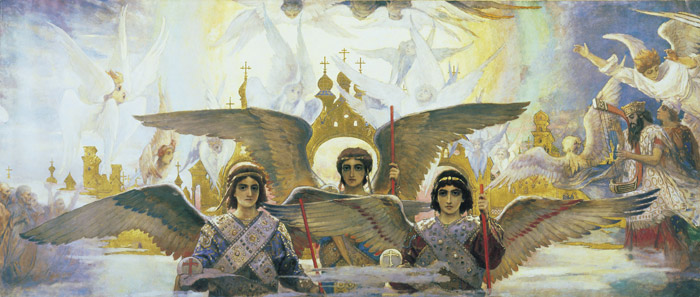
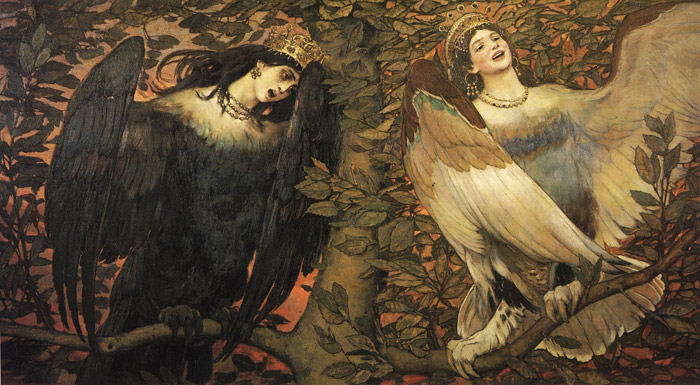

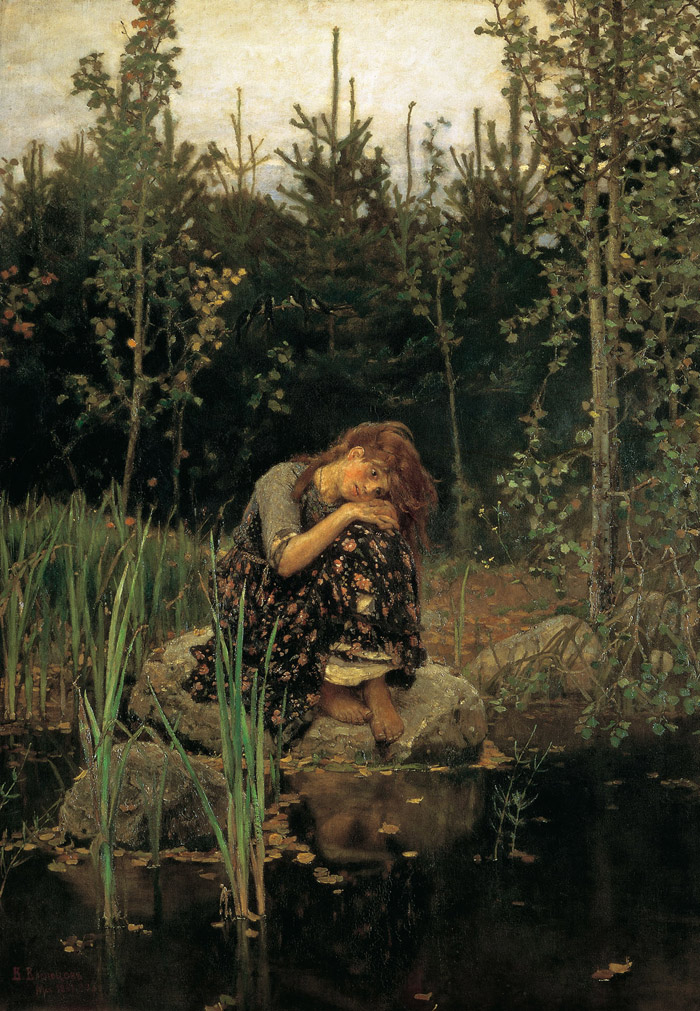
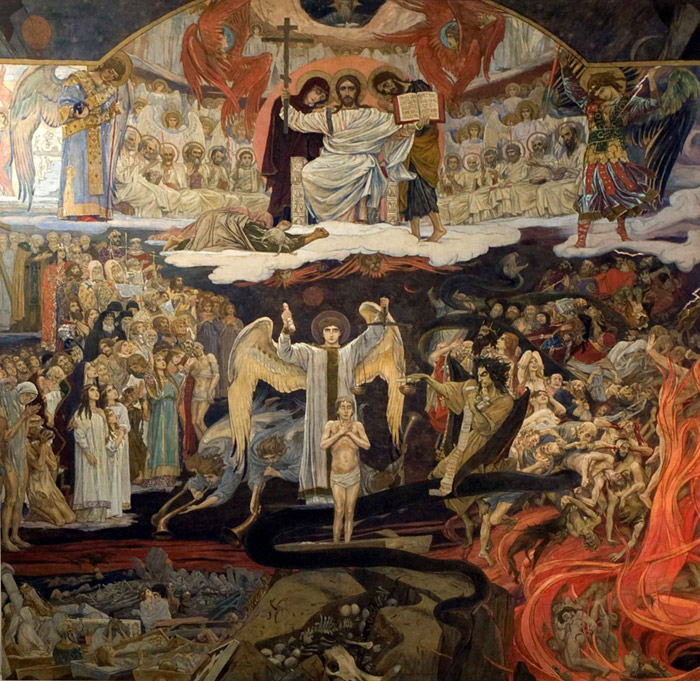
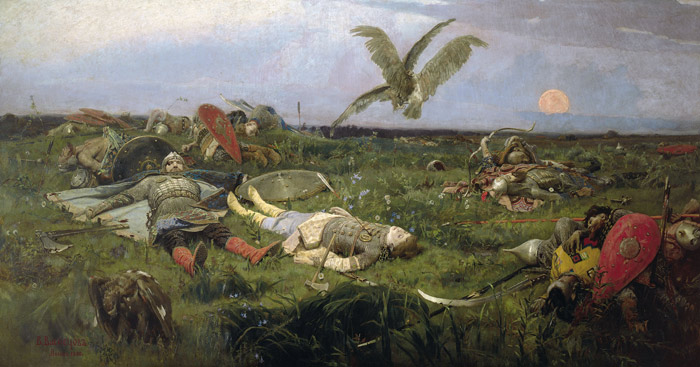
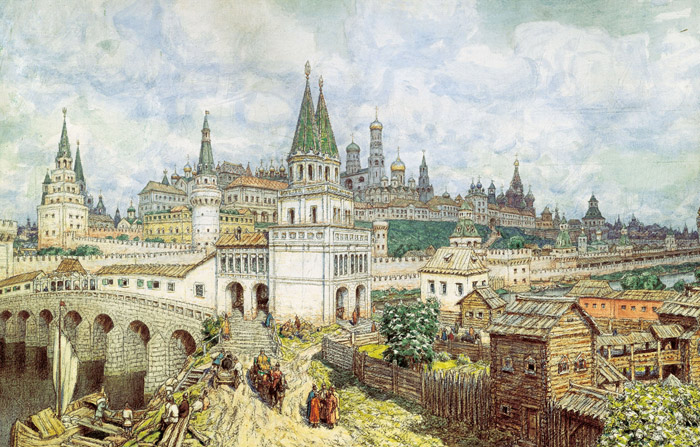
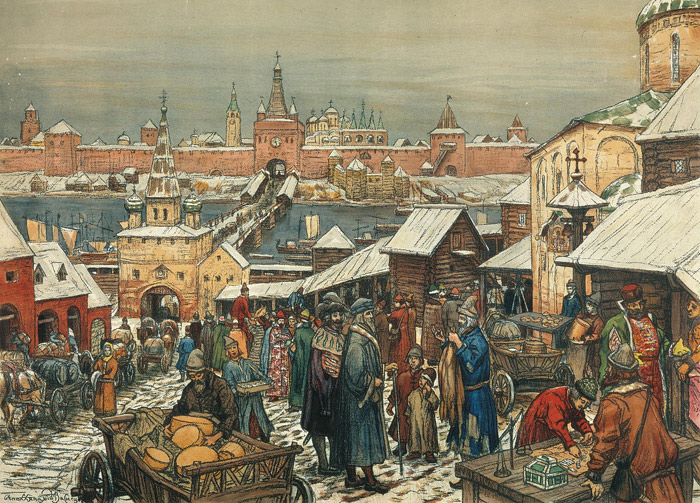
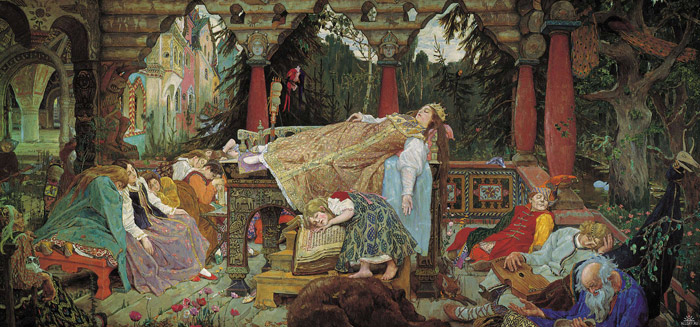
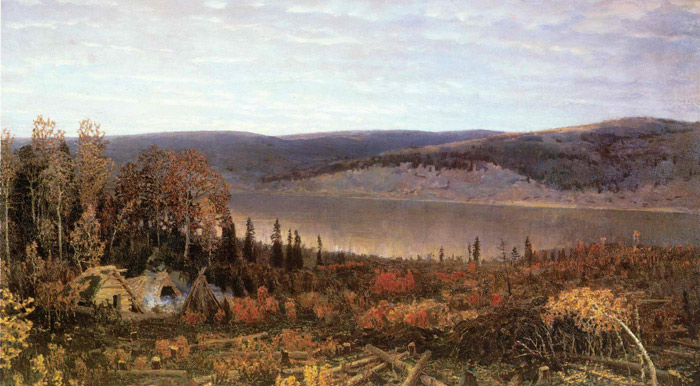
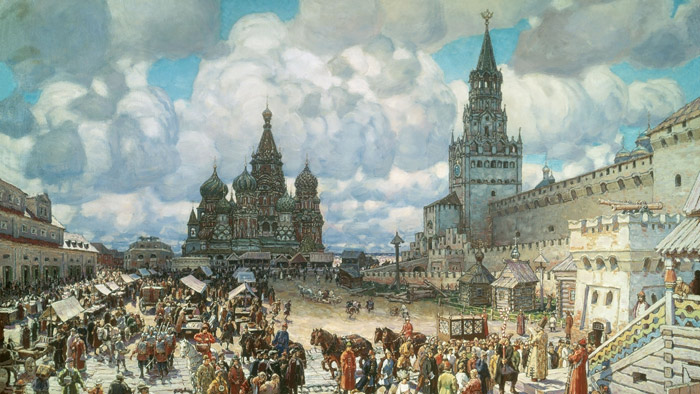
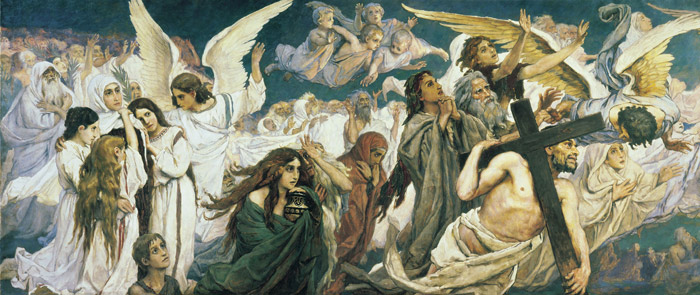
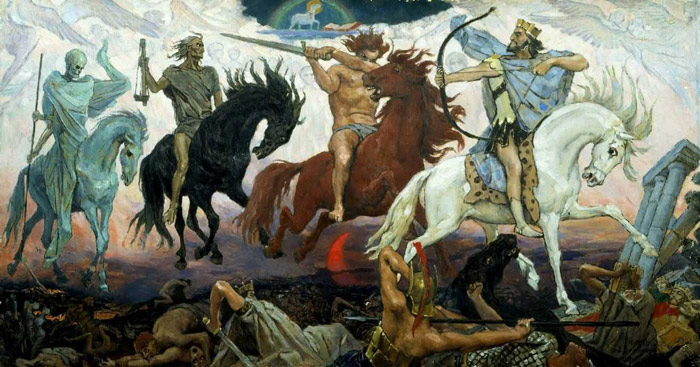
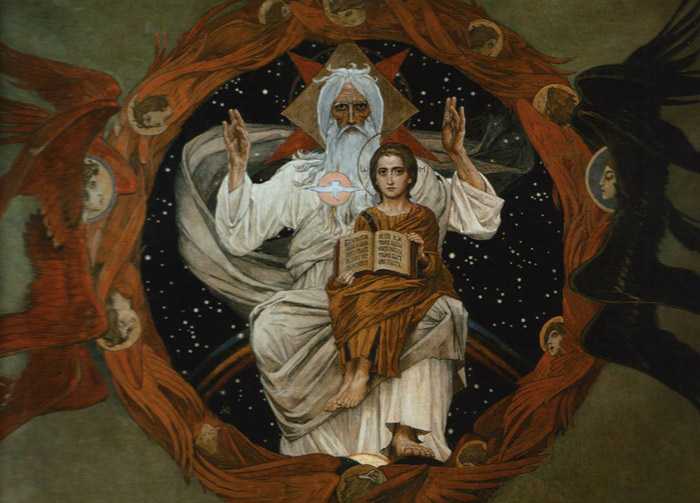

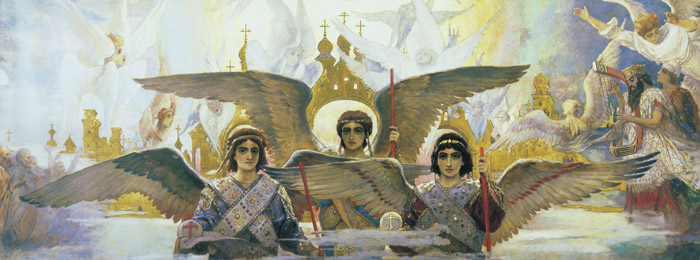




The sad girl sitting near the pond.I like that painting .
I like that one as well.